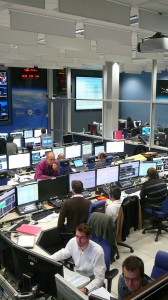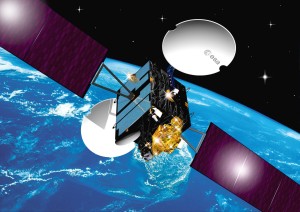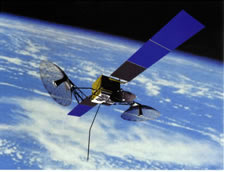I spoke on 30 July with ESA’s Marcus De Deus Silva, who works on the joint ESA/CNES ATV mission operations team at Toulouse. Marcus was responsible for planning and overseeing last week’s System Validation Test (SVT) for ATV-4, the first one.
For any mission, SVT’s are crucial! This type of test involves connecting the actual spacecraft (or its engineering model twin) to the actual mission control system developed at the control centre. Engineers can then send ‘real’ telecommands to the spacecraft, checking that it reacts as it should and that all flight procedures, processes and systems work as planned.
For ATV in particular, this means that the mission control team at ATV-CC in Toulouse were actually connected to ATV-4 mounted on a test bed at the Astrium manufacturing facility in Bremen, Germany. The team sent telecommands, tested communications to/from ATV, checked on-board internal communication of data between systems, confirmed that several safety systems were working and sent a test ‘CAM’ command (Collision Avoidance Manoeuvre).
The test ran for an exhausting, 06:00-21:00 day, and took months of team work to prepare, but the work paid off: “There were no unforeseen issues, and the test went very well,” says Marcus.
The test involved representatives from the joint ESA/CNES mission control team, Astrium, Redu station, ESA’s Columbus Control Centre, NASA Houston and NASA TDRSS.
There were several interesting aspects to this SVT.
“The connection was made via NASA’s Tracking and Data Relay Satellite System (TDRSS) as well as via ESA’s Artemis relay satellite,” says Marcus.
“So the communication chain ran from ATV-CC via the International ISS Ground Segment connections to NASA mission control Houston (MCC-H), then to the White Sands antenna farm, up to a NASA TDRSS satellite, down to a ground receiver set up at Astrium Bremen and then into ATV-4 via a cable connection.” Later in the test, communications were also run via Artemis via ESA’s Redu station in Belgium.
He says it was necessary to run the SVT sending test commands to ATV-4 between periods of sending normal, routine telecommands to ATV-3 in orbit – via a different TDRSS satellite. “It was vitally important to keep the two mission control systems separate, for obvious reasons, so we put a lot of effort into this,” says Marcus.
In fact, test commands to ATV-4 were sent only when the ISS (with ATV-3 docked) was on the opposite side of Earth, so there was a nice physical barrier – our planet – between the two ATVs.
A second SVT for ATV-4 is planned for later on, about ten weeks before launch and prior to ATV-4 fuelling in Kourou.




 Automated Transfer Vehicle page
Automated Transfer Vehicle page ATV blog archive
ATV blog archive
Discussion: no comments